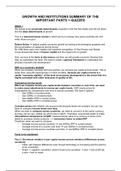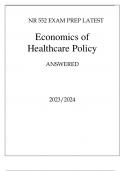Samenvatting
Economic Growth and Institutions summary that got me an 8 for the exam
- Instelling
- Tilburg University (UVT)
Economic growth and institutions summary of all lectures and questions and answers for the weekly quizzes A few times (4 or 5 times) I refer to the slides because it contains a lot of mathematics, but this summary provides a really good intuitive understanding of what we discussed (also of the a...
[Meer zien]














